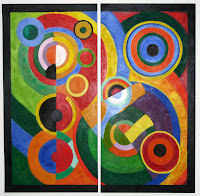A common trend noticed through out the 2012 Melbourne AGIdeas Convention was collaboration. Collaboration with other designers, other fields of expertise such as photographer, modelling, illustrating and installation/mechanics.
Speakers such as Paul Marcus who advocates play, share and explore. Through out his presentation he spoke of trust and respect when working with others. Learn from collaboration, explore. Skills and knowledge can be gained in new places created new ways of working.
Linda Jukic is a project director. She deals with different individuals working together and collaborates with them to create something spectacular that on their owns could't possibly achieve.
Some collaborations do not always turn out to plan and for some wild ideas the possibility of that idea may be extinguished. However through effort, experimenting and simple trying, many grand designs can be done on a large variety of scales and mediums.
Concept Evaluation
Ree Treweek is an quirky illustrator from South Africa and a member of 'The Blackheart Gang'. She creates illustrations of dark, twisted little characters that appear regular but have an abnormality to them.
One of her popular works is the 'Tale of How' short animation and now book, she along with other members produce illustrations to go along with a fairy tale story.
This illustration is a shot from the short film of 'The Tale of How' and portrays dodo birds that live in a tree on top of an octopus reffered to the terror of the indian ocean, Otto the Monster. This illustration has gone through many processes from hand sketches to computer rendering and to animation.
The illustration portrays the piranha dodo birds out in the ocean with tentacles immersing from the ocean waves. The piranha dodo birds also have weird attachments to themselves such as a foot or a crane on top of their head. This relates to the bizarre illustration style Treweek is known for. The overall feel of the illustration is dark & dull colours, the mood is quite dismal as the dodo birds are generally eaten by the octopus until their escape. Besides the characters there are fine details everywhere. In the waves and clouds are numerous of lines and the greenery is illustrated in fine floral and leaf designs. everything has a texture to it, a very detailed texture that brings the illustration to life. This illustration is the start of the short film created using these illustrations, which the effect of the short film is very illustrative and almost pop up book/paper puppetry.
Here is a link to the short film behind the illustration: The Tale of How
Bibliography:
Notes taken during the AGIdeas Convention































